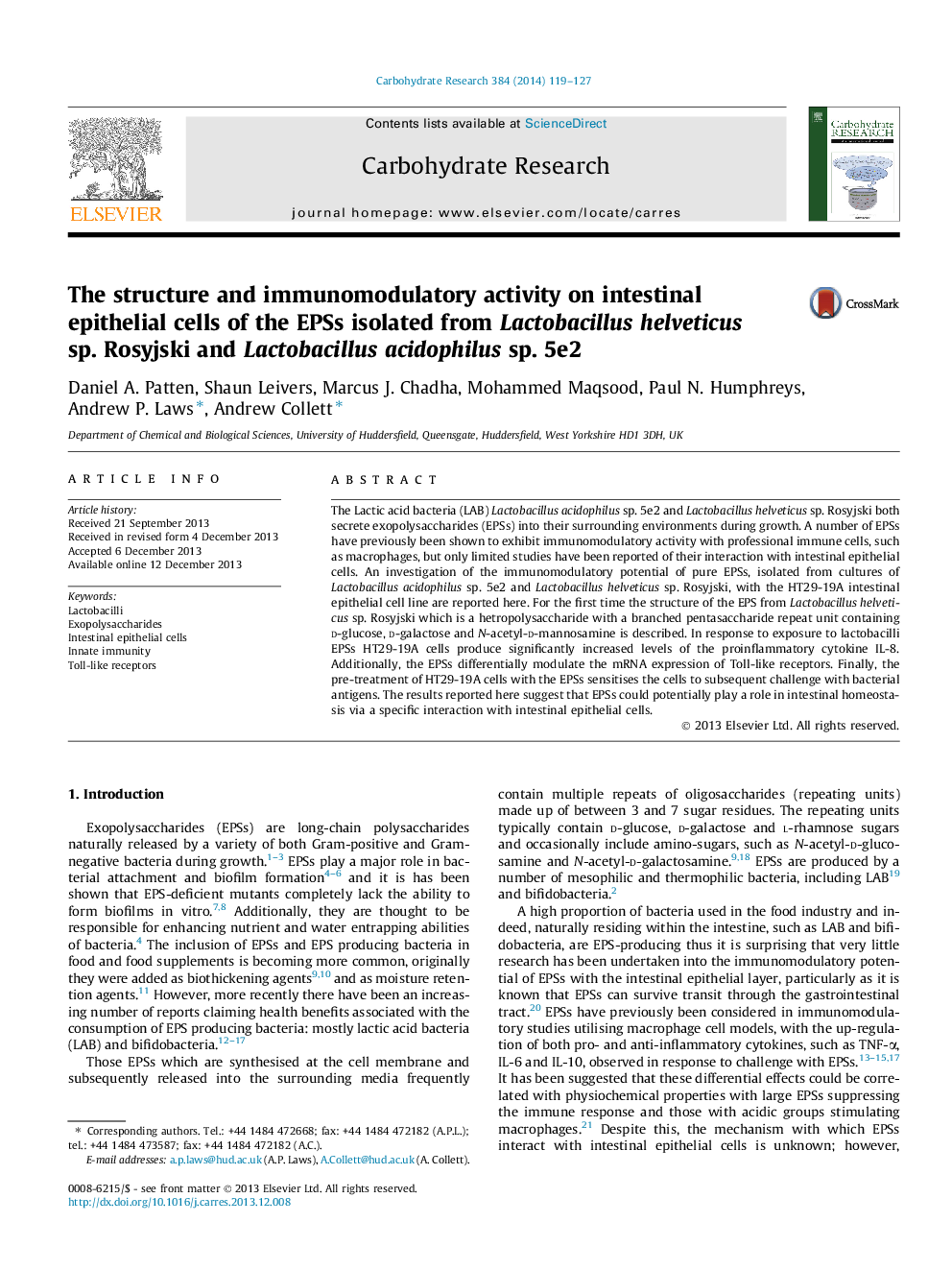| کد مقاله | کد نشریه | سال انتشار | مقاله انگلیسی | نسخه تمام متن |
|---|---|---|---|---|
| 1388637 | 1500867 | 2014 | 9 صفحه PDF | دانلود رایگان |

• Structure of the EPS from L. helveticus sp. Rosyjski.
• Identification of N-acetyl-d-mannosamine in the repeating unit.
• Increased production of the chemokine IL-8 on exposure to EPS.
• Differential regulation of mRNA of Toll-like receptors in response to EPS exposure.
• EPS sensitises HT29-19A cells to subsequent challenge with bacterial antigens.
The Lactic acid bacteria (LAB) Lactobacillus acidophilus sp. 5e2 and Lactobacillus helveticus sp. Rosyjski both secrete exopolysaccharides (EPSs) into their surrounding environments during growth. A number of EPSs have previously been shown to exhibit immunomodulatory activity with professional immune cells, such as macrophages, but only limited studies have been reported of their interaction with intestinal epithelial cells. An investigation of the immunomodulatory potential of pure EPSs, isolated from cultures of Lactobacillus acidophilus sp. 5e2 and Lactobacillus helveticus sp. Rosyjski, with the HT29-19A intestinal epithelial cell line are reported here. For the first time the structure of the EPS from Lactobacillus helveticus sp. Rosyjski which is a hetropolysaccharide with a branched pentasaccharide repeat unit containing d-glucose, d-galactose and N-acetyl-d-mannosamine is described. In response to exposure to lactobacilli EPSs HT29-19A cells produce significantly increased levels of the proinflammatory cytokine IL-8. Additionally, the EPSs differentially modulate the mRNA expression of Toll-like receptors. Finally, the pre-treatment of HT29-19A cells with the EPSs sensitises the cells to subsequent challenge with bacterial antigens. The results reported here suggest that EPSs could potentially play a role in intestinal homeostasis via a specific interaction with intestinal epithelial cells.
Figure optionsDownload as PowerPoint slide
Journal: Carbohydrate Research - Volume 384, 30 January 2014, Pages 119–127